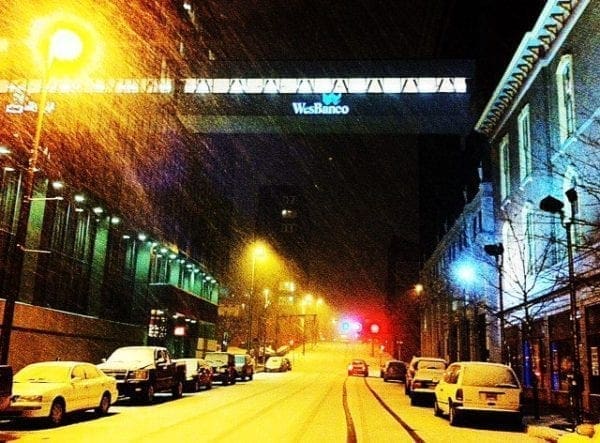Tom Howard became the sheriff of Ohio County in January 2016, and since then he’s been challenged by the drug epidemic, shoplifting at The Highlands, traffic issues connected to the gas and oil industries, and by state officials while discussing the many intricacies involved with the massive Interstate 70 project.
But, in many ways, Howard dreads most the first significant snowfall in the region, and although the National Weather Service is not forecasting any of the white stuff for the Upper Ohio Valley until the first week of December, it’s on his mind.
“There are a lot of different reasons why so many accidents take place when that first snow arrives, but most of them are caused by human error,” explained Howard, a former 20-year police officer for the city of Wheeling. “People continue to drive like it is still summer, and bad things happen when they do that on snowy roads.
“They seem to forget every year that different parts of the roadway will freeze before other parts, especially all the bridges and overpasses that we have in the county and along the interstates,” he continued. “And four-wheel drive is not the cure-all when it’s bad out. A lot of the motorists think they are invisible when they use all-wheel drive, but you’re still going to slide if you’re driving a way you shouldn’t be in that kind of weather.”

Reduced speed limit signs, Howard confirmed, are now being installed along Interstate 70 by the W.Va. Division of Highways in an effort to significantly slow down motorists from the Ohio state line to the border of Pennsylvania. From the Ohio line to Elm Grove, the speed limit will be reduced to 35 mph, and from there to Exit 10 near The Highlands will be 45 mph.
From that point to the Pennsylvania line, the speed limit will be 60 mph.
“Although the reduced speed limits were approved by the people in Charleston in October, the DOH is just now getting those new signs posted along I-70, and we hope everyone pays attention to them,” the sheriff said. “Each winter, speed seems to be an issue we deal with in bad weather, but it can be avoided by simply slowing down. Those new speed limits, especially in the areas of the crossover, are intended to keep people safe.
“But these days, it just seems as if everyone is in a big rush to get where they’re going, and not only does that result in speeding tickets, but it also causes a lot of problems along Two-Mile Hill and out in the county,” Howard explained. “If it has snowed a good bit, the road is still going to be slick even though the crews plowed it. Those crews can throw all the salt they want but once the temperatures go below freezing, that salt quits working.”
That’s when “black ice” comes into play.
“It’s called that for a very good reason, and there are areas along the interstates and out on the county roads where water sometimes runs across the roadway, and if it’s cold enough, black ice is going to form. If you are going too fast, it will take the steering away from your control,” Howard said. “If you don’t take that into consideration, you may end up colliding with another car, or you may end up over the bank and in a creek. We’ve seen that situation a lot in bad weather.

“We just don’t want people getting hurt. That’s our main concern because we’ve seen those mistakes being made, and we’ve seen far too many people get hurt or worse,” he said. “If the roads are really bad, maybe you consider not going anywhere until the crews are out. They do a great job clearing the roads, but too often people aren’t patient enough to let them do their jobs.”
Chief Deputy John Schultz offered a checklist for local motorists:
- Be sure there’s plenty of gas in the vehicle;
- Wear seatbelts at all times;
- Routinely check your tires for good tread;
- Put a blanket, water, and food in the car or truck, and;
- Be sure to have a phone charger.
“I know when my kids go off to college at this time of year, their vehicles are prepared for the season,” he said. “In bad weather, even the vehicles that we use can have a tough time in rough weather like snow and a hard rain. They are great in whatever weather, but that’s because we know how to drive them in those situations.
“No one wants to think about bad things happening, but it’s really a good thing to be prepared because, let’s face it, you could face a really bad situation out there because of someone else’s mistakes in the winter weather,” Schultz added. “And those little things can make a difference, but far too often the people we find off the road in a ditch or creek don’t do those things.”


